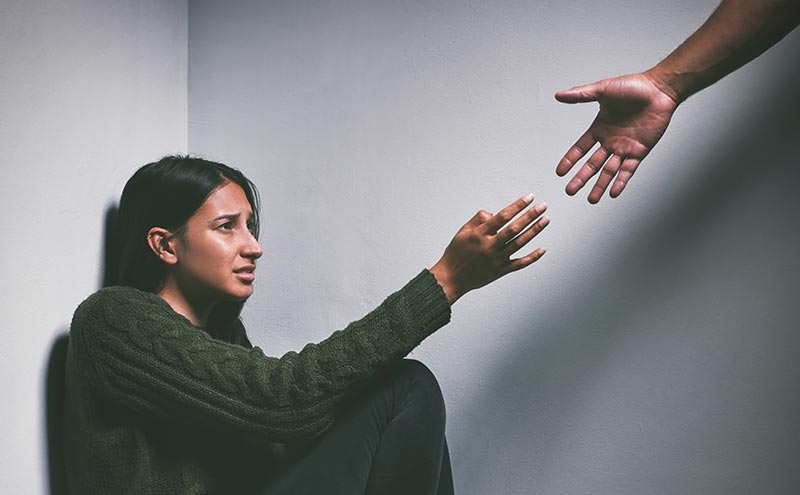
Social EM Program Spotlight - Health Alliance for Violence Intervention (HAVI)
We had the opportunity to chat with Dr. Kyle Fischer, MD, MPH, FACEP, an emergency physician and the fellowship director in health policy at the University of Maryland School of Medicine about his involvement with the organization Health Alliance for Violence Intervention, or HAVI.
What is your official job title within HAVI?
a. Policy Director
What is your role within HAVI team?
a. The Health Alliance for Violence Intervention (The HAVI) is the national organization that represents hospital-based violence intervention programs (HVIPs). HVIPs are comprehensive care programs that support survivors of community violence so they fully recover physical, psychologically and socially. My job as the policy director is to leverage the policymaking process to expand the availability of these services to wherever there are patients in need. This has quite literally ranged from mid-sized city councils to the White House.
How did you get involved with HAVI?
a. My residency research project! I went to medical school at the University of Wisconsin, where I did the combined MD/MPH program. When I arrived at Drexel for residency, I wanted to continue public health work and Dr. Ted Corbin took me under his wings as a mentor. He ran the Healing Hurt People HVIP, so I volunteered with them and did a research project focusing on the program. When I left for my Health Policy Fellowship, I took over chairing the policy working group for the HAVI (then known as the National Network of Hospital-based Violence Intervention Programs) and have been a lifer ever since.
What barriers did you face when balancing a career as an ED doc and involvement with a group like HAVI? How about facilitators?
a. When I first joined the HAVI in 2014, there was quite a bit of stigma around working in the gun violence field. A fairly prominent emergency physician asked me during fellowship, "You want to do gun violence? What, do you want to ruin your career…?" That was pretty disheartening, but luckily, he turned out to be wrong. The tide certainly shifted and now is a better time than ever to work in the field. I've had incredible mentor along the way. Dr. Joneigh Khaldun was my fellowship director and still a source of advice and inspiration.
If you had to give an elevator pitch for HAVI, what would it be?
a. HVIPs save lives and ensure that these patients fully recover to lead healthy and happy lives. The old "treat 'em and street 'em" paradigm for treating gunshot wounds is a failure. Without intervention, roughly 1/3 of these patients will return to your trauma bay with another injury. This is unacceptable. Imagine if post-MI, we discharged patients without definitive medical care, cardiac rehab, and resources for weight loss and smoking cessation. It would be unacceptable. Yet, in most places in the country, that's what we do for survivors of gunshot wounds. It's both substandard medical care and a moral failure. Luckily we have the tools, expertise and momentum for change.
Can you describe a typical patient with whom the HVIPs interact and the benefit they can have?
a. HVIPs primarily serve survivors of community violence. You may have previously heard it called gang violence, street violence, or urban violence, but that terminology has fallen out of favor. The patients are overwhelmingly young black and brown men who have faced significant inequities throughout their life and are generally disconnected from the medical system. The benefit for the patients is comprehensive team-based care led by a violence prevention professional. These professionals are recruited from the communities they work with, look like the patients they serve, and frequently have survived violence themselves. The end result is that patients get a whole host of needs met: educational and job opportunities, connections to social services like insurance, housing, and mental health services.
What are you most proud of with respect to HAVI has achieved?
a. At a high level, I'm most proud that the HAVI has been part of an incredible coalition of organizations that is shifting the expectations and narrative around how we address some of the profound racial inequities that our patients face. On a more nuts and bolts level, I'm proud that we've helped lay the foundation for trauma-informed systems of care. The violence prevention professional role was something our network created from scratch and is now recognized by the federal government, with 5 states now reimbursing through Medicaid. The amount of funding 5 years ago for these programs was negligible. Yet, in the last 2 years, the dollar amounts being infused have been unprecedented. For example, the Department of Justice just released $50 million in funding for community violence intervention and most of the community was disappointed that the dollar amount wasn't more. 3 years ago it would have been an unimaginable amount.
What advice would you give to someone looking to start a HVIP at their own institution?
a. Learn as much as you can about hospital-based violence intervention programs and then form a team! We have lots of resources on The HAVI website (www.thehavi.org) including a best-practices guide to launch a program. But nobody can do it on their own. Creating a multi-disciplinary team that isn't only EM docs will help you share the workload as well as ensure broad hospital buy-in. Also, it's more fun and rewarding to have a group that is doing good work when everyday emergency medicine gets tough.
Is there anything else you think would want a group of EM physicians to know about HVIP or HAVI?
a. Your patients need you. Luckily, you don't have to go alone. State violence prevention coalitions are popping up all around the country and have been instrumental in helping to gain support and resources. The HAVI is here to help too. We offer training and technical assistance at every step of the way. Lastly, lean on us at the HAVI to find a funding source. There is plenty of funding available, and I've spent the last decade of my life figuring out where it's hidden.



